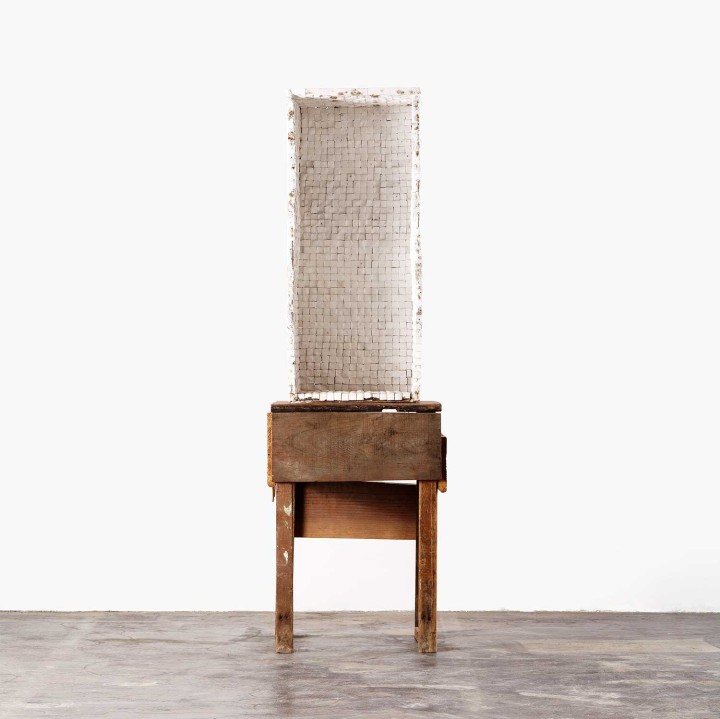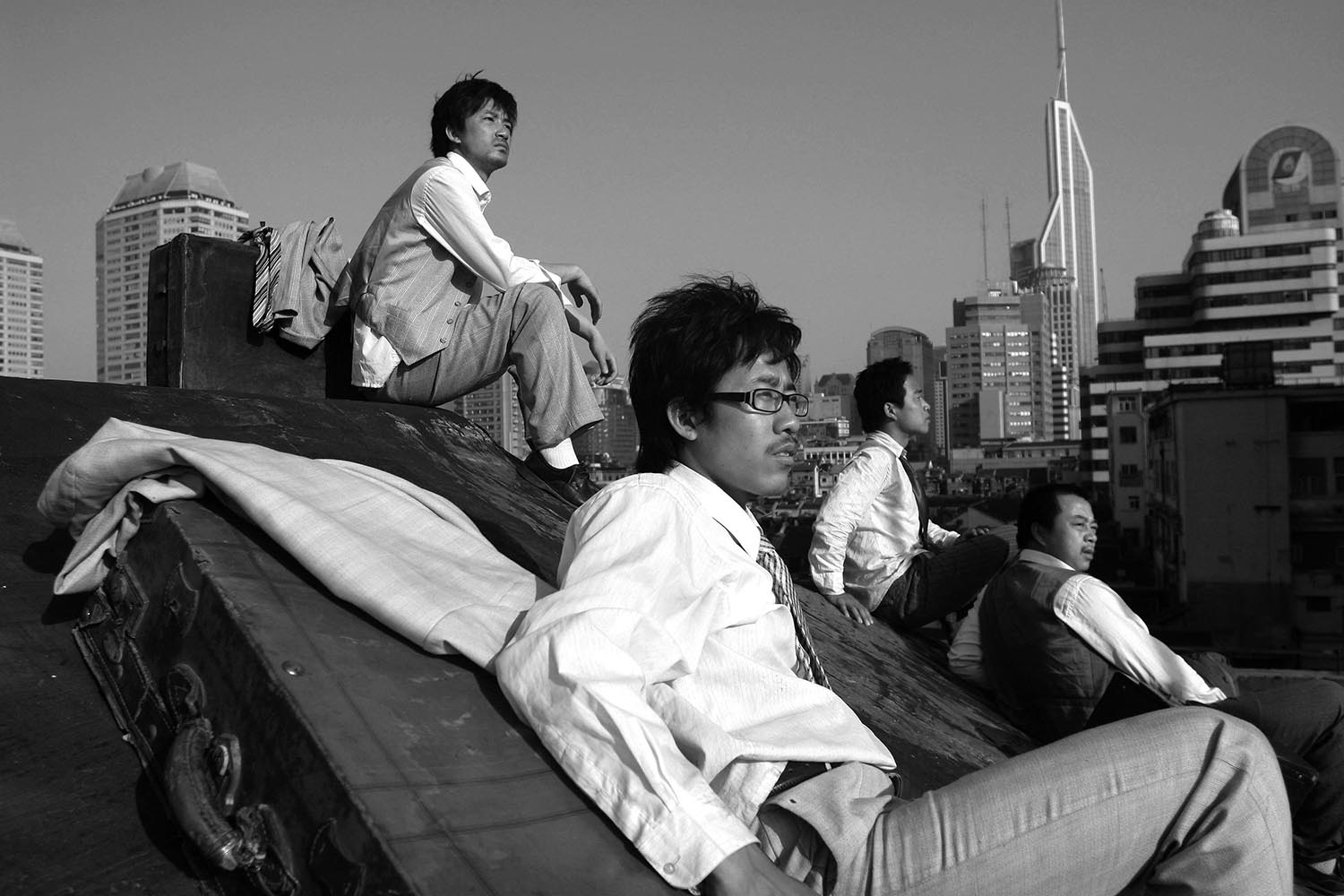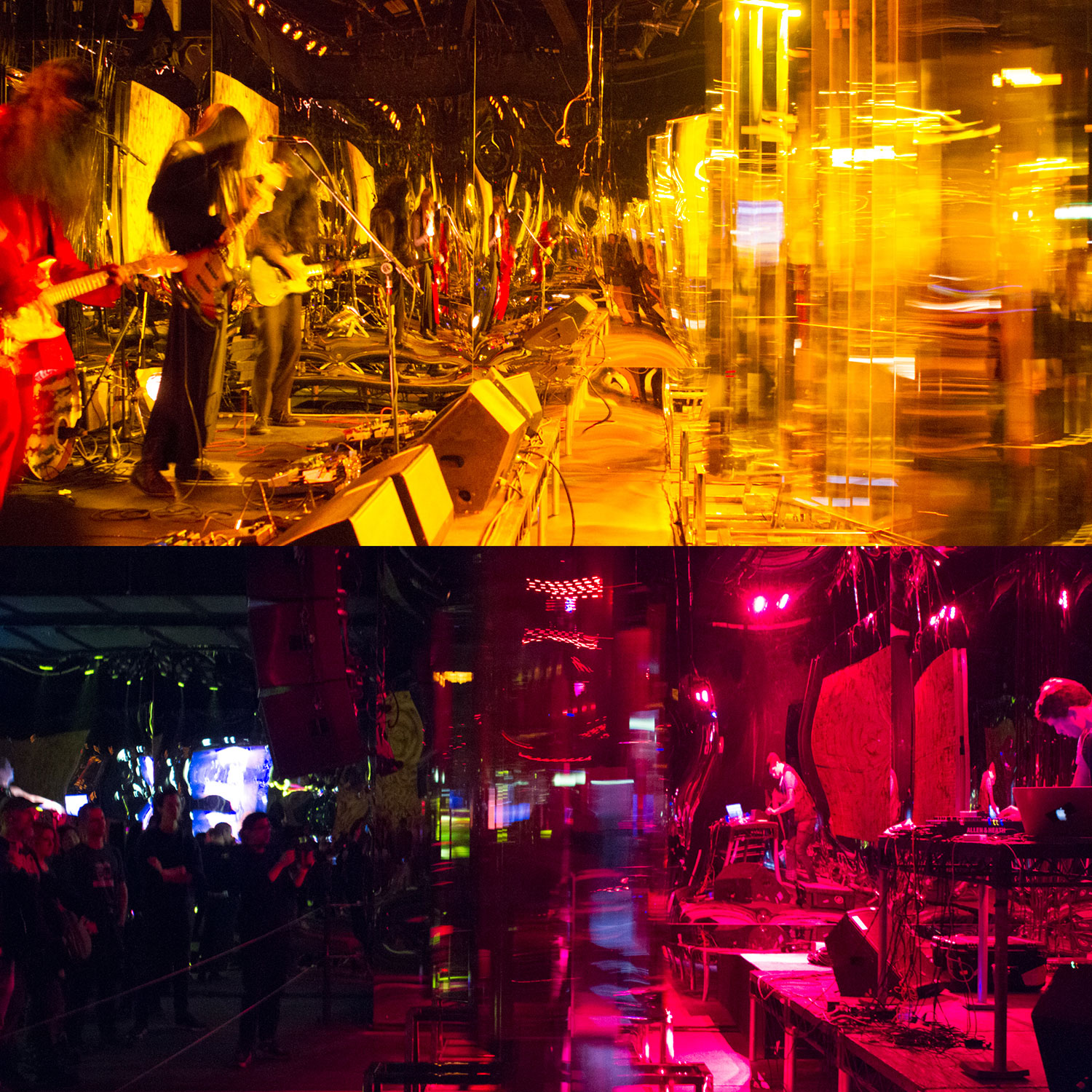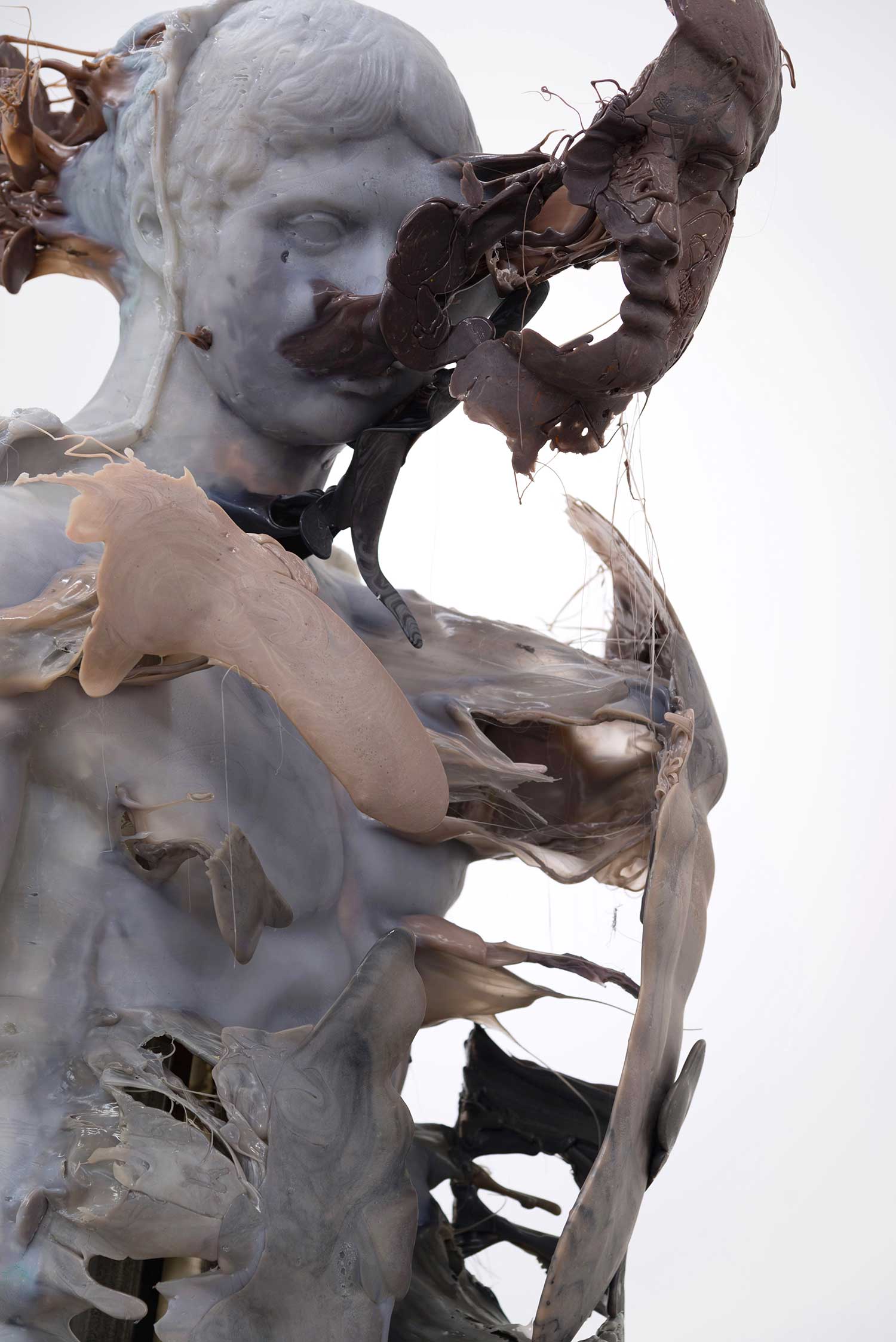
I will begin with a myth. When I invited Shanghai-based artist Yu Ji (b. 1985; Chinese) to participate in the group exhibition “Inside China: L’Intérieur du Géant” at the Palais de Tokyo, Paris, in 2014, what attendees did not experience on the opening night was the artist’s initially proposed work. For an institution that mounts ambitious projects by well-known artists, this might come as a surprise. The proposal was not rejected for its aesthetic grounds or curatorial inconsistencies, but for its potential to damage other works in the institution and for the health risks it would pose to audiences. What Yu proposed was to throw down a bag of cement in the exhibition space during the opening and then walk away, while her oft-collaborator, the Beijing-based experimental musician Yan Jun, sustained the levitation of the drifting cement particles with upward-facing, disassembled speakers. The sound, through a process of taking the “unconscious of the room,” would likely be a low-frequency noise, and it would stop when the dust settled. This non-spectacle would have surely provided an experience that called to mind the relentless construction boom and environmental treacheries of China. It would have left many visitors to the exhibition’s opening with an irascible cough, and it would have made Paris feel a bit like a Chinese metropolis. Meanwhile, in its unrealized form, the work confronts audiences with multiple myths, half-myths, truths and half-truths.
One suspects that Yu was subtly probing the limits of acceptability with a simple, singular gesture that could provoke audience discomfort, compromise the integrity of other artworks, challenge curatorial authority, and, at the same time, present a searing commentary on the incessant industrial drone that is “progress.” The radicality of this unspectacular act is something that pervades Yu’s sculptural practice. Through the prismatic myth-making of a rejected proposal, we begin to understand the quiet power of Yu’s works, particularly two ongoing series of sculptures: “Public Space” and “Flesh in Stone,” which she began in 2007 and 2012 respectively. This may be a roundabout way to introduce Yu’s art, yet it speaks to how the artist compounds and then discombobulates time and its ever-shifting relationship to the self in the amplitude of the present moment.
Common and discarded materials provide a rigorous groundwork for Yu’s material, somatic, philosophical and spiritual inquiries. The series of cement sculptures “Flesh in Stone” comprises only five figurative works since 2012 — a pace of one or two per year. Yu generates these forms through a series of live sittings with male models in her studio, which was until recently located in the still-operational Hero Pen Factory on Qilianshan Road in the Northwestern part of Shanghai. She instructs her models to test the limits of their bodies to the point of physical exhaustion, and, it must be said, to the brink of boredom or a meditative nothingness. She refrains from drawing or molding during these sessions, but commits the experiences to memory, allowing torsos and limbs to unfold over time. She then creates the figures retrospectively in clay, and then uses these studies to fabricate resin molds to be filled with cement. This common building material is chosen for its inexpensive, nonprecious, instantly and universally relatable quality. None of the figures has feet, arms or a head. Genitals are there, but negligible and diminutive, formed as if in hesitation. The surfaces of the figures retain a smooth, sensual roughness, with slightly raised edges from the molds that bisect them in cross-section. Each figure is precariously supported by an adjustable iron armature fashioned to curve around just enough of the sculptural body to barely support its weight. These iron structures are things of beauty in their own right, and I’ve often fantasized about them with the bodies missing, despite the deep empathy that is generated by the sight of the mutilated figures.
The poses assumed by these figures are:
Flesh in Stone No. 1 (2012):
torso;
back against the wall;
left leg missing;
right thigh toward ground at 45 degrees.
Flesh in Stone No. 2 (2013):
1/3 torso and legs;
left leg bent and parallel to ground;
right knee points to sky and invisible foot points down;
body seems to levitate.
Flesh in Stone No. 3 (2013):
full torso, most “Greek” of the bunch;
slightly bloated abdomen;
no legs.
Flesh in Stone No. 4 (2014):
body forward;
thighs and torso forming an inverted “V”.
Flesh in Stone No. 5 (2014):
3/4 torso;
kneeling;
half-thighs;
left side of body against wall.

In creating the series, Yu channels her years of observing, in person as well as through reproductions, the ancient sculptures of China, Cambodia and India — archaeological bodies ravaged by the passage of time. Certainly these are not conventional references for most young artists working today in China, who favor monumentality and production values that reflect a mastery of new technology, the current vogue for abstraction and content that explores aspects of contemporary art history, underground subcultures or our digital consciousness. All manner of political allegory can be read into Yu’s use of one of the world’s most common building materials and her depictions of the maimed body. With each man-made disaster in China, the cost of humanity in the face of progress is called into question. In 2015 alone, there were the Tianjin explosions, the Shenzhen landslide and pollution red alerts in many cities. Yu is keenly aware of these implications as an artist from China, yet what she is interested in is how we abide our splintered subjectivities and how we acknowledge these inhabited bodies in the present moment. In Yu’s words, she is searching for how “one’s flesh [can] be trusted if the flesh does not represent any one person, carry any emotions, showcase any physical details, or carry any anatomical accuracy.” With this skepticism, Yu creates a temporal relay wherein the body, fragmented and in movement, is sustained through the weight of time and the fecundity of memory. Art as time machine.
As an offshoot of the “Flesh in Stone” series, her “Tiny Figures” (2012 and 2014) are female and male bodies whose overall dimensions are reduced while at the same time enlarged to represent almost the entire human figure, though still without arms. They are attached to the wall with cuff-like iron armatures that resemble straitjackets. Made two years apart, the distance in real time between the two figures suggests a poetic reality. They beckon the viewers from afar, perhaps as lovers trapped in time. This year, Yu continued the series with yet another offshoot, Flesh in Stone – Components #1 and #2. With these, the body is further reduced, to a single leg and an upper torso with arms truncated at uneven lengths. They seem stretched and flattened, as if we are looking at them from a position above or below our actual vantage, as if we did not quite share the same space-time as these compressed and sculptural 3-D renditions.
Subjectivity and memory serve as the motor of Yu’s practice as she disrupts the authority of formal and historical accuracy. Direct observation is suspect. With the series “Public Space,” Yu proceeds at an even slower pace; she is currently working on the sixth work in the series since 2007. Imperfectly handmade plaster cubes are fabricated as basic units to construct maquette-like structures that are, except for one, inexact copies of Communist-era public toilets. They are placed (except for one that is installed on the wall) on makeshift tables and socles made with slabs of discarded wood Yu finds mostly around her studio, often with rusty nails still protruding. Some of these dirty lavatories referenced by the works can still be found in outlying areas of Shanghai and in second- and third-tier Chinese cities. Fascinated by their various configurations and anonymous architectural “designs,” Yu contemplates how individual subjectivities can inadvertently emerge out of the systems of anonymity imposed by the Cultural Revolution or any social condition. The structures are complicated objects that belie their simplicity; Yu has described them as things that “come from my mind, [my] memory of true history, fake stories, created images.” The problematizing of temporalities corroborates with visual artifacts’ capacity to “enact a breaking through time and a raising from the dead” as described in Alexander Nagel and Christopher S. Wood’s book Anachronic Renaissance. In looking at Yu’s work, we are confronted with a double-sword of locating and dislocating of time and space.
Based on direct memories as well as recollections of photographs of the communal structures — though not faithful to any specific photograph — Yu first forms plaster cubes out of paper molds that deform as soon as they are used, thus embedding a system of instability into the most basic unit of her architecture. Rife with fragility and imperfection, each plaster cube gathers stray dust in her studio to form varying shades of white and intermittent gray. Like Agnes Martin’s grids gone off the page, they are sculptural blank slates. Anti-monumental, they nonetheless are not a form of miniaturization; rather, they purport the shift of consciousness in the mental process of negotiating temporality, history and scale. With each “movement” of “Public Space,” the scale of the sculpture expands and contracts according to the illogical distensions of our quotidian relationship between mind, body and architecture. What is the orientation of a structure into which our mind can enter? Are we not already inside it without knowing? How do we come out of it unscathed? At the time of writing, Yu is building Public Space No. 6, which appears to quote from the upper level of Public Space No. 3. It appears as six toilet stalls, instead of four, with the opening of the stalls rotated forward. The palm-size scale is now enlarged to arms-length. Or is it simply Pubic Space No. 2 multiplied by two? With each new work in her sculptural practice, Yu casts doubt upon our previous spatiotemporal understanding, highlighting the ramifications of our perceptual shifts. Implicating us in the intractability and elasticity of time, she dispatches us to experience space in the space of our minds, rerouting us toward the slow burn of time.





